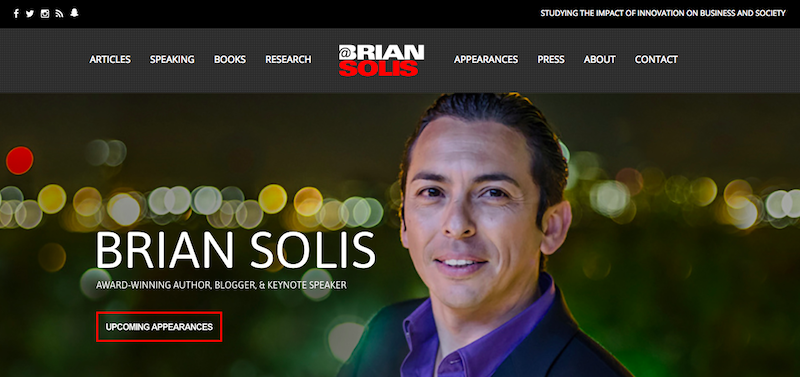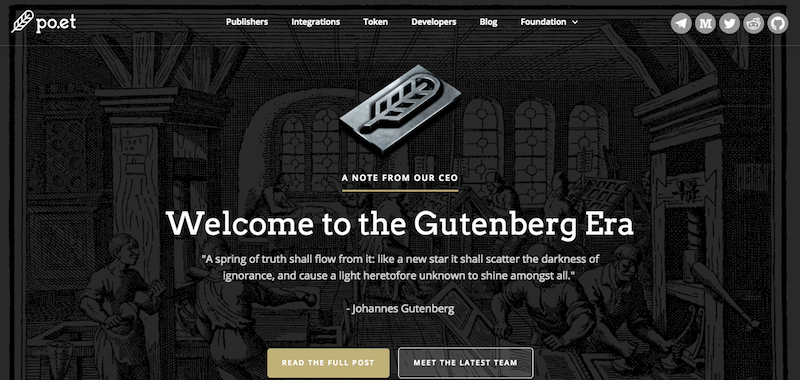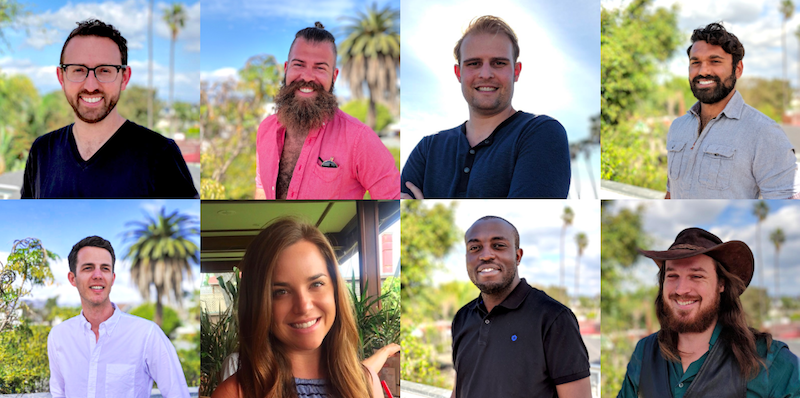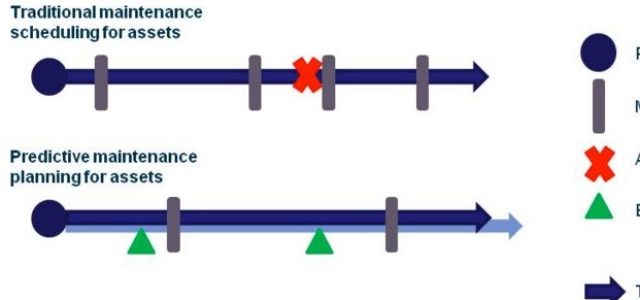Remember that persistent line from the shampoo ad? “Here comes the science bit. Concentrate!” It’s a bit like the problem we have today when we talk about machines, computer networks, and digital devices. People glaze over at the science part, which is just about anything that goes below the surface level of how an industry works.
Me, I’m a copywriter. I know nothing about optometry. I’ve no idea what’s happening when the optician gets really close to my face, but hey, my specs stop me from walking into lamp posts, so I’m just glad she brushes her teeth.
In the futuristic world, when we talk about products and services it can’t be all about the technology, the engineering, or ‘the science bit’ if we want to get people’s attention.
Release the Human from behind the Technologist
Boundless Mind is my latest crush. They’re a bunch of neuroscientists I read about in TIME: “You’re Addicted to Your Smartphone. This Company Thinks It Can Change That,” the report said. I was in.
Here’s how they describe themselves on their website home page: “Boundless Offers Powerful Engagement Software for Growth and Product teams: AI-optimized reinforcement that changes user behavior and drives business metrics.”
I’m not sure exactly what it all means, but I start to get a taste of their vision further down the page:
“Boundless Mind makes it easy to hook your users. No development, experimentation, maintenance, or graduate level courses required. Just plug it in.”
OK… but hooking your users is ethical, right?
I dig deeper: “Delight doesn’t just feel good: it rewires the brain,” they say. “The Boundless AI optimizes when and how to praise and encourage each user uniquely.”
So it’s about feeling good.
“Praise” is good.
Unique praise and a focus on individual needs = even better.
Sounds like they’re onto a good thing…
In fact, it looks like everyone’s a winner:
“What action inside your app is good for people, creates value for you, and they can do often enough to make a habit?”
If on planet neuroscience Cambridge Analytica is cast as Darth Vader, Boundless Mind is Luke Skywalker. They stamp their feet on this in their ebook (which is well worth a read):
“As an app publisher, and one equipped with Behavioral Design, you’re the closest our world has to a wizard. Use your power for good. Period. Failure to do so not only builds a world worse off for all of us, it will hurt your business in the long-run.”
If that’s not a primal scream for all of our humanity, I don’t know what is.
Yet nobody can hear it from page 36 of an ebook you have to download. A powerful sentiment like this can’t be hushed, so you might as well put it up front and centre.
Know the person on the other side of the screen
If you’ve ever tried to assemble an IKEA wardrobe without the instructions, you’ll know it doesn’t end well. One upside down door and a lot of frustration later, you wonder why you bothered.
It’s no different on your website. Anyone who pays it a visit wants to know immediately what they should do. Otherwise, they’ll dart around aimlessly before wandering off to make a cup of tea.
Take Brian Solis.

On his home page, it says Solis is “a digital analyst, anthropologist, and futurist” — that’s quite a concoction.
It’s this fascinating mix of expertise that makes him capable of tossing aside the idea that we all fit neatly into a Gen XY or Z persona. Solis makes something of the idea that many of us of all ages identify as Generation C: The Connected Consumer. When he writes about Gen C, Solis describes my curious on-demand digital lifestyle with such precision, I wonder if he’s spying on me.
You see, futurists like Solis rampage through our technological times like warriors. They go out and investigate what the heck it all means then report back to us mortals.
These are the words on Solis’s website that stand out to me:
“His research and his books help executives, and also everyday people, better understand the relationship between the evolution of technology and its impact on business and society and also the role we each play in it.”
But there’s a lot on the page: Articles, books, slides… the lot.
In the end, I find this keynote speech on YouTube:
“It comes back to humanity. There are only two ways to influence human behaviour when it comes to innovation. You can manipulate it or you can inspire it. I think more people want to be inspired.” ~ Brian Solis, BDL Accelerate 2016
The 30-minute talk inspires me. I want more, but I don’t know where to start.
It’s no bother to Solis if I read his site or not. I mean, it’s not that he needs any help selling his services. Have you seen how many speaking engagements he has this month alone?
Still, why not have one more advocate for the valuable work you do? It could be as simple as identifying readers who a) buy your stuff, b) want to work with you on stuff, and c) want to share your stuff with others, then tell each of them what to read first. Just so long as the message gets out.
Get to the point quickly
This is the home page for po.et.

The service is for poets so they know this reference, I get that. But what if your reader isn’t the poet?
Say they scroll down the page and read that the service “reclaims value for content creators, publishers and consumers”. They’ve got a poem-writing uncle who hasn’t touched a computer in 30 years, so it feels like it’s their job to let him know this great thing exists.
The uncle has no idea what the blockchain is. Even so, he can understand the meaning behind the “attribution remains safe”. In a nutshell? It keeps people from stealing your work — the stuff you spent years writing and rewriting until your fingers bled.
This is what people are angry about.
Hurt by, even.
Tap into those emotions in your web copy and it’s clear to anyone why po.et serves such a useful and ethical purpose.
- The platform “builds a bridge”, they say.
- You can “create your own terms” — great, we all like autonomy. (I have a preschooler and, trust me, the bid for free will starts early.)
- The blockchain is “transparent”, “secure”, and “flexible”, which means there are no nasty surprises, there’s less risk, and you have the freedom to enjoy it.
Aren’t these the things you want for a fictional poet-writing uncle? Or indeed, for yourself.
But people need to know straight away what you do and who you do it for.
You know what MetaLab does?

Further down the home page, they go on to say, “We help the world’s top companies build amazing apps, products, and services”. If you’re in any doubt what they mean by that, they follow on with no less than 10 top-class examples:
- Coinbase
- Slack
- Amazon Photos
- Oculus
- Facebook Messenger
- Lonely Planet Trips
- Notarize
- Peer
- TED Content
The page is littered with flawless testimonials. It’s clear they’re top of their interfacing game. So when MetaLab asks: “Want to work with us?” it’s hard to say no.
People love to put a face to a name
When you’re working on stuff most of us can’t quite get our heads around, it helps to show the people behind the technology. That’s why all of the smart folk I mention above add photos of themselves to their website.
Look at the team at Boundless! Aren’t they smiley? : -)

I had a review of my own site not long ago and someone far wiser than me asked, ‘Where’s Natalie hiding?’ She was right. Afterwards, I added a photo of myself right at the top because, without it, I’m just a virtual typewriter who produces the words.
When you’re talking about machines, algorithms, robots, and artificial thoughts, it’s important for someone on the outside to see into the soul of a company. CLICK TO TWEET
Take Action
Ask yourself honestly if you can picture the person you most want to land on your website next — they offer the next big sale or sign up, or an exciting collaboration.
If it’s a bit vague, imagine you’re about to spend the next two hours with them.
- What do they smell like? (Seriously!) Do they wear aftershave, face cream, or have they not washed in a few days?
- What do they bring with them? Do they saunter in with a mobile phone, sunglasses, and a taut smile? Or do they hurry through the door with a glittery notepad and a lucky pen?
- Think about what they say. Maybe they have six young kids and are overtly thrilled to be in adult company. Maybe they’re anxious and quiet, or goofball humour helps them forget their hangover.
Who knows.
I don’t know the people you want to inspire, but you should. You don’t really have to know those things above – of course, but you do need to be able to humanise the person who comes to your website for answers.
Speak to people.
Get to know them.
Then start a conversation on your home page and take it from there.
Article by channel:
Everything you need to know about Digital Transformation
The best articles, news and events direct to your inbox
Read more articles tagged: Customer Journey, Featured







